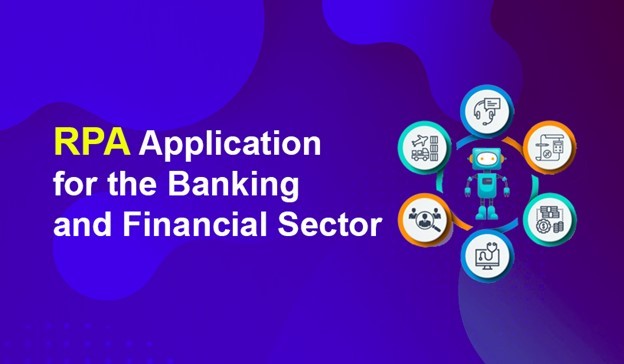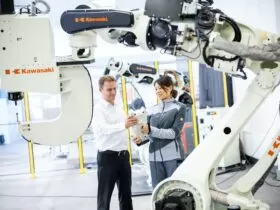RPA in the finance and banking industry works in a specific workflow that gives robots detailed instructions on what to do at each step. When the automation process software receives a plan, it can run the required programs independently and perform the tasks specified in the requirements. Many banks and financial institutions today use RPA automation tools, KYC processes, anti-money laundering techniques, client implementation processes, and other recurring tasks to open accounts.
The use of technology in banking and financial services has created a new fintech industry. Robotic Process Automation (RPA) is easy to confuse with other automation solutions as the FinTech industry embraces the latest digital technologies. It also creates confusion about the best systems and solutions based on the needs of the organization. So how is RPA different from other digital solutions? What are the benefits of RPA? What will happen to the implementation of RPA in the financial sector? Here are some of the questions we’ll try to answer in this article.

The difference between RPA and other automation solutions:
The main difference between an IT solution and an RPA, which also has an advantage, is that an RPA does not require new infrastructure to function. RPA is a computer coded robot that uses existing digital infrastructure, solutions, interface and other systems to efficiently perform repetitive and time consuming tasks. It is relatively inexpensive and easy to implement as it requires no additional infrastructure.
Other differences between RPA and IT technologies:
- Rapid profit
- Minimal initial investment
- No downtime on large systems
- It is managed by an IT company
- High scalability and adaptability to a changing business environment
Some of the benefits of RPA are:
- This allows employees to focus on key functions that require intelligence and decision-making.
- Save time and money by improving customer service and meeting legal requirements.
- Robots increase productivity and efficiency because they can do more in less time.
- Bots reduce errors because they only do what you program.
The Banking and Financial Services Sector (BFS) is now the largest data collection entity operating in the regulated market. The scope of international compliance in this area is wide and includes many rules for financial and risk management activities such as transaction monitoring, money laundering or fraud, financial reporting, and KYC disclosure. As most of these transactions are managed by the bank, this process is time-consuming and error-prone.
Robotic Process Automation (RPA) has become a powerful and effective tool to compete in growing markets. RPA has made great strides in improving quality, scope and cost-effectiveness, and in ensuring compliance with legal and analytical considerations.
Most financial institutions use RPA to gain a competitive advantage. The separation of winners and losers sees it not only as a force factor, but also as a destructive force.
According to a recent report on RPA changes and forecasts, RPA will receive $ 29 billion in 2021. This is a sharp increase from $ 250 million in 2016.
Security has been enhanced with RPA in the banking and financial sector
The implementation of RPA in the field of online banking and financial administration allows for secure, encrypted processes and regular security updates. Client wallets are protected from information leaks and identity theft on online investment portals and automate two- or three-step authentication using OTPs and notifications. Implement biometric security features to make banking transactions safer and faster.
In Banking and Financial Services, RPA can be used in the following process:
1. Check the Background
Past audits have been an important function of insurance companies and banks and require the collection of data from different sources and formats. Customers must meet compliance requirements such as KIC (Meet Your Customer) and CDD (Customer Duty Check). This tedious process requires a significant amount of work hours, and by providing software robots for it, you can enable the human workforce to focus on strategic tasks.
2. Fraud detection
In the financial and banking industries, in addition to technologies such as natural language processing, RPA can improve operational efficiency by verifying and validating accounts in minutes. In general, financial companies spend large sums of money on these processes. Therefore, the use of RPA not only lowers costs, but also enables the extraction of data from different sources, making fraud detection systems more efficient and accurate.
3. Internal business processes
The finance and accounting departments also have several internal processes that the RPA can use to reap all of the above benefits. These processes include reporting, auditing, account closing, card blocking, and so on. RPA bots can perform these tasks quickly and with the utmost precision, increasing the efficiency of all services.
Various Applications of RPA in the Financial Sector
- Customer Service
Banks answer a wide range of questions every day, from balance information to account information and billing status. It is difficult for banks to answer questions 24 hours a day. With the help of automation, RPA can actually respond to these questions and set the transition time in seconds.
- KYC
Note Customers are required to bank transactions for all customers. This process involves creating the required customer reviews. According to Thomson Reuters, banks spend about $ 384 million annually monitoring the KYC process. Banks have started manually approving customer data with RPA, taking into account costs. This also improves the accuracy of completing tasks with minimal errors.
- Data Durability
Customer data is constantly changing: addresses, credit scores, etc.
- Direct Account Opening
Banks must verify all details, such as identity, compliance with bank rules, and previous credit score. These proof letters are invalid, so RPA is useful here. Therefore, you can open an account quickly and efficiently.
- Simplify Card Activation
These are some of the customer card-related actions, such as access to mobile data, despite severe time constraints. Software bots, on the other hand, do not complain about lack of time, so it is not error free and it is implemented efficiently. The automated robotic financial system is in the testing phase of its overall potential and areas most affected.
However, because of its various advantages, RPA should be seen as an innovative technology that can lead to significant business growth.




























